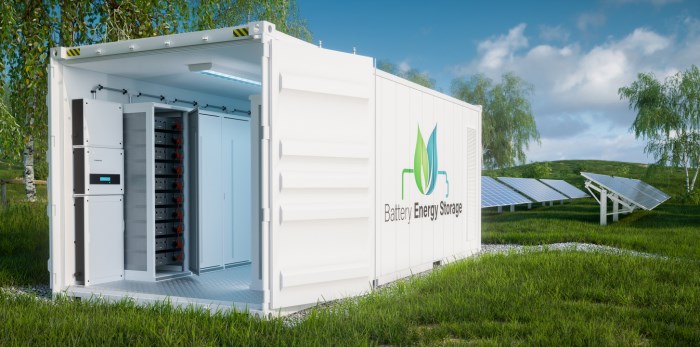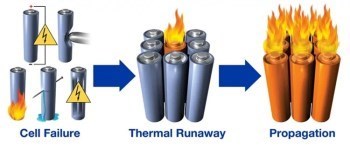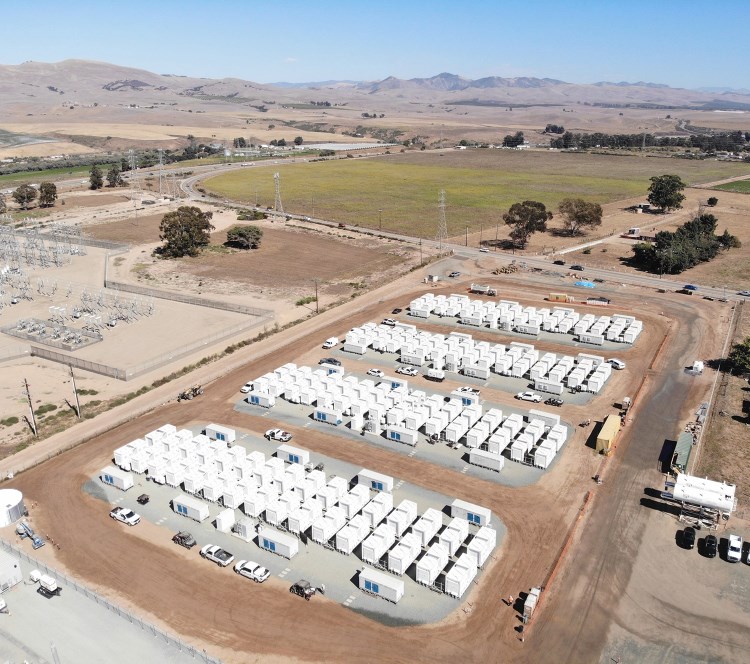Battery Storage Facilities
1/29/2025 - This is a NEW page!
Check back soon for updates
What is a battery energy storage system (BESS)?

A battery energy storage system (BESS) is a structure that houses a large group of batteries designed to store electrical energy, typically sourced from renewable energy like solar or wind power. The stored energy is released back into the grid when needed, such as during peak demand periods or power outages, helping to prevent rolling outages.
Safety Risks from BESS
Thermal Runaway
Thermal runaway in battery energy storage systems (BESS) using lithium-ion batteries occurs when heat builds up in a battery faster than it can be dissipated. This can happen due to factors like internal short circuits, overcharging, or external temperature fluctuations. As the heat accumulates, the chemical reactions inside the battery accelerate uncontrollably, leading to a rapid release of energy and a significant rise in temperature. This process can cause the battery to overheat, potentially resulting in a fire, explosion, or other hazards.
To mitigate these risks, facilities are designed with safety systems such as temperature monitoring, fire suppression technologies, and advanced battery management systems (BMS) that help prevent or detect potential issues early on. These systems help ensure that any heat buildup is addressed before it can lead to catastrophic failure, thereby protecting both the facility and the surrounding community.

Cell Ignition / Fires
When thermal runaway happens, the battery cell experiences an unstable chemical reaction. As oxygen combines with the toxic, flammable gases released, it can cause the cell to catch fire, potentially triggering a chain reaction that ignites nearby cells as well.
Cell Breach / Explosions
If the pressure inside the cell becomes too high, it can rupture, releasing flammable gases and, in some cases, high-speed projectiles. These gases can mix with oxygen, creating an explosive risk.
Hazardous Materials - Toxic Gas/Smoke/Plumes
Lithium-ion battery fires produce extreme heat, along with large amounts of gas and smoke. The gases emitted from energy storage systems are both highly flammable and toxic. The specific gases vary depending on the battery chemistry but generally include carbon monoxide, carbon dioxide, hydrogen, methane, ethane, and other hydrocarbons.
Hazardous Materials - Toxic Runoff
The only proven method to stop ongoing thermal runaway in a lithium-ion battery is using large amounts of water over an extended period. However, this process can lead to hazardous runoff, carrying toxic and dangerous substances.
Are You Prepared?
Before a BESS facility incident
- If you live or work near a BESS facility:
- Build an Emergency Supply Kit with the addition of plastic sheeting, duct tape, and scissors.
- Make a Family Emergency Plan, and remember to include emergency planning for your pets.
- Ensure you have signed up for emergency alerts.
- Know how to operate your home’s ventilation system.
- Identify an above-ground shelter room with as few openings as possible.
- Read more about sheltering in place.
During a BESS facility incident
- Listen to local radio or television stations for detailed information and follow instructions provided by emergency officials carefully.
| If Ordered to Evacuate |
|
In some situations, you could be directed to evacuate. Make sure to:
|
| If Ordered to Shelter-in-Place |
In some situations, you could be directed to shelter in place. Make sure to:
|
After a BESS facility incident
- Listen to local radio or television stations for the latest emergency information.
- Return home only when authorities say it is safe.
- Open windows and vents and turn on fans to provide ventilation.
- Find out from local authorities how to clean up your land and property.
BESS facilities in SLO County
Caballero Battery Storage Project

The Caballero Battery Storage Project is a 100-megawatt facility located at 650 Joshua St, Nipomo (approximately 1,000 feet from Highway 101) that utilizes lithium-ion battery technology to store power.
The facility utilizes propagation-resistant batteries and individual battery storage containers to reduce the risk of fire.
The facility, which is scheduled to open in early 2025, is owned by Alpha Omega Power.
- Facility approval information: County Planning and Building
Caballero Emergency Response Plan
The Caballero Emergency Response Plan (ERP), written by Alpha Omega Power, is under review by SLO County Fire, County Counsel, County Planning and Building and a private licensed Fire Protection Engineer.
Public Safety Emergency Response Information
- In the event of an emergency at the facility, an emergency response will be initiated by the San Luis Obispo County Fire Department and the San Luis Obispo County Sheriff's Department, in coordination with other agencies, including CHP, Environmental Health, Caltrans, the County Office of Emergency Services, mutual aid fire resources and others.
- A comprehensive multi-jurisdictional standard operating procedure is being developed to ensure the coordination of responders to their discipline and to facilitate effective public communications and will be finalized prior to the facility opening.
- In the event of a fire at the facility, suppression efforts would vary from direct application of water to allowing the fire to burn out. The suppression method would be based upon a hazard assessment, which would evaluate factors such as the level of public risk, exposure to adjacent pods and the likelihood of successful containment or extinguishment.
- Protective Actions (shelter-in-place and/or evacuation) may be necessary in close proximity to the facility.
- Residents should Know Their Evacuation Zone that could be used for this and other emergencies. Zone SLC-356 is immediately surrounding the facility and would be the area initially impacted by an emergency at the facility.
- Residents affected by an emergency at the facility would be notified by the Office of Emergency Services. Depending on the situation, Sheriff's deputies may also go door to door and/or utilize their hi-lo sirens to warn residents.
Additional Information about BESS in California
- California Public Utilities Commission has issued a proposal to enhance safety at ESS locations
Contact Us
The County Office of Emergency Services (OES)
1055 Monterey Street D430
San Luis Obispo, CA 93408
County OES Business Line: 805-781-5678
County OES Business Email: oes@co.slo.ca.us




